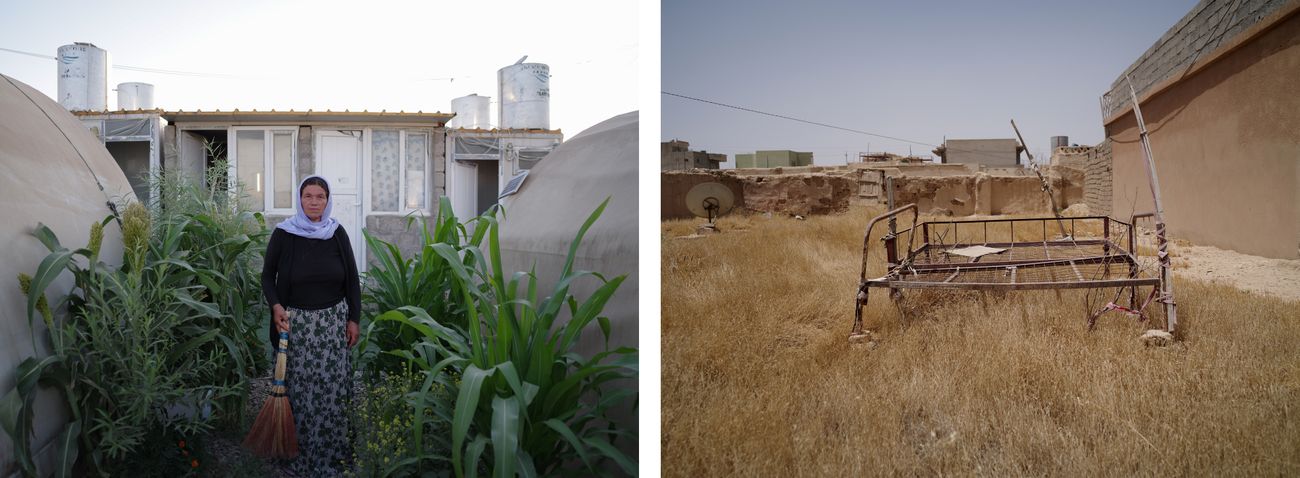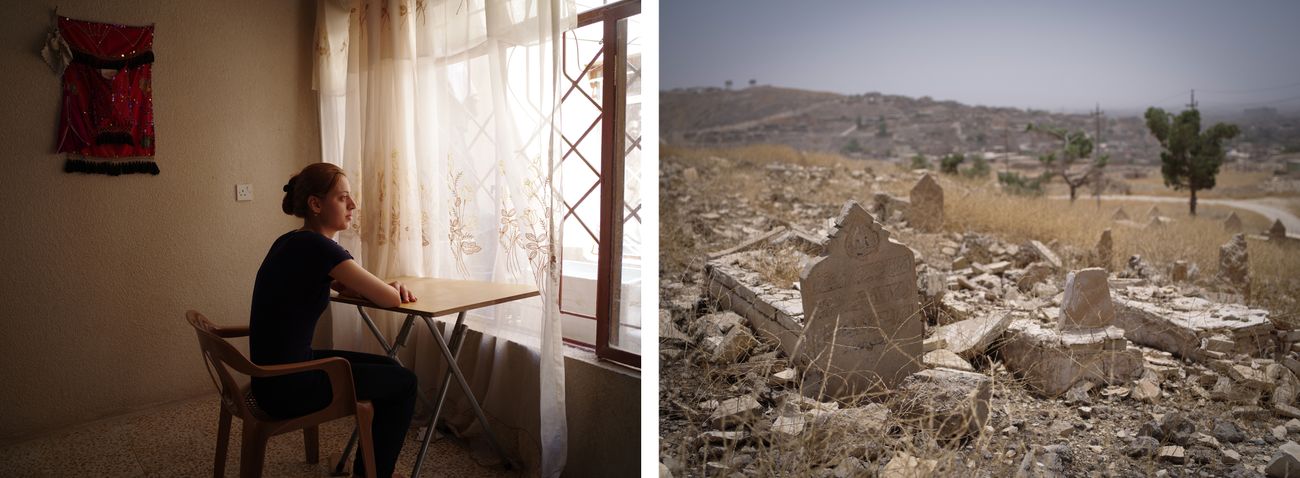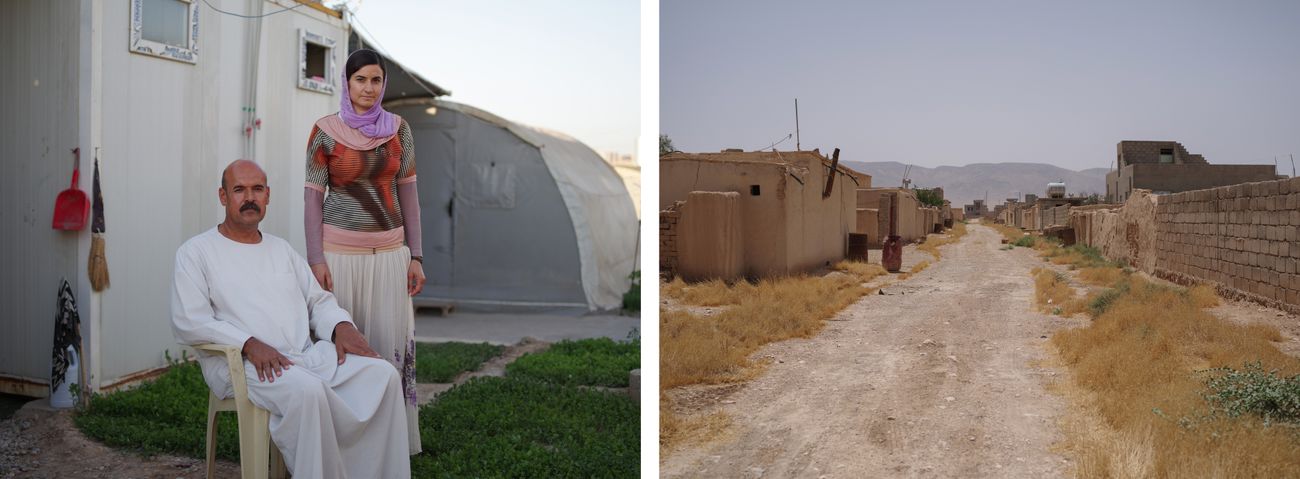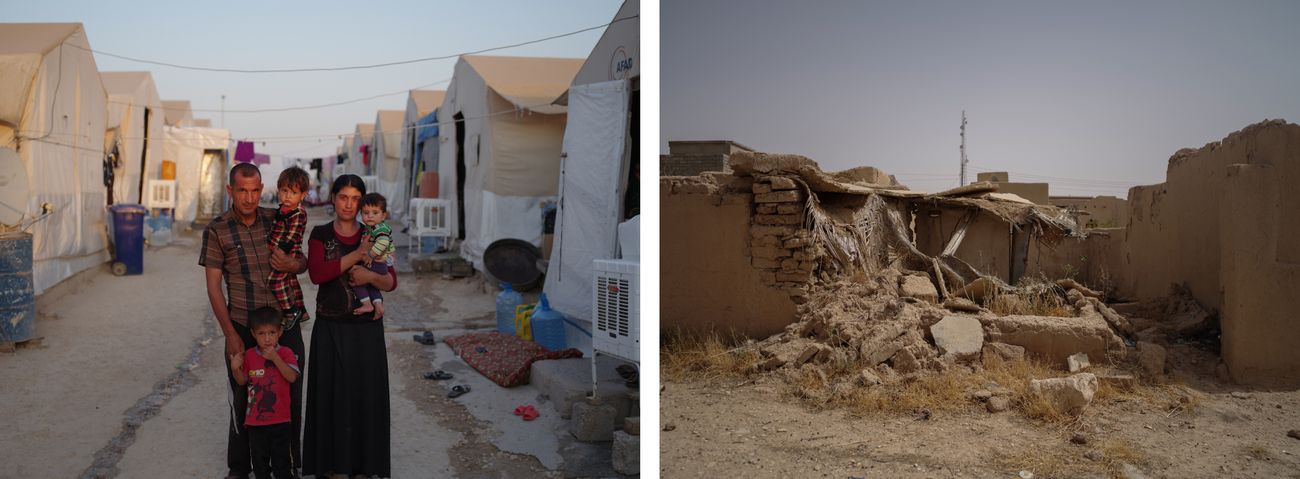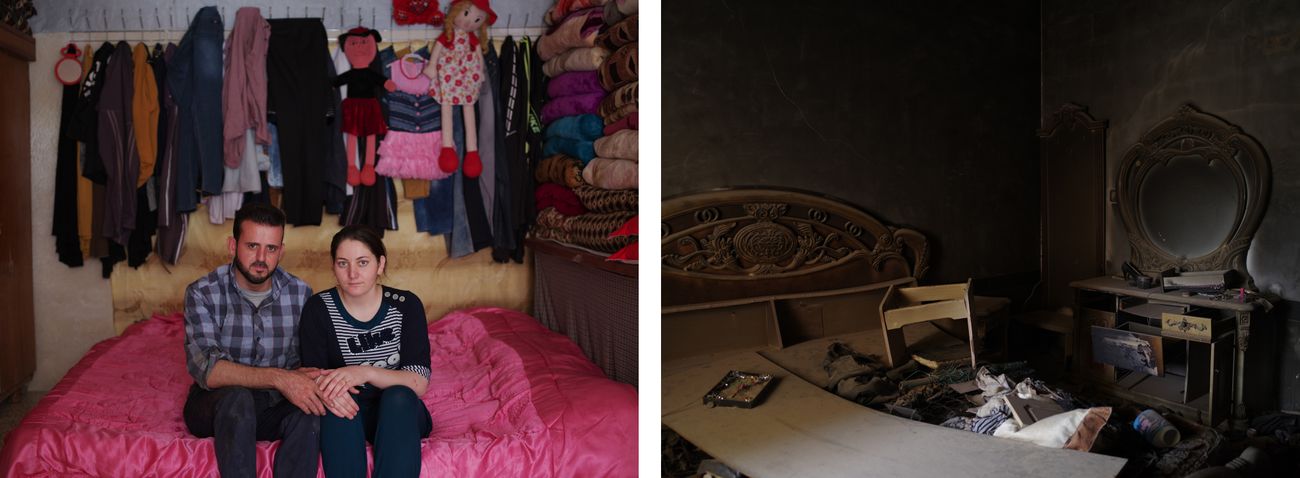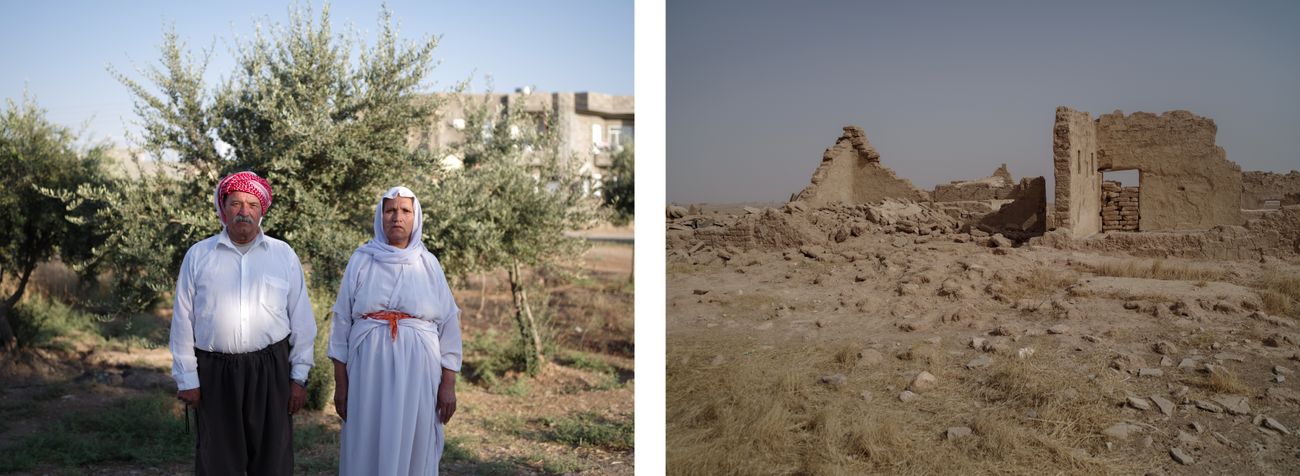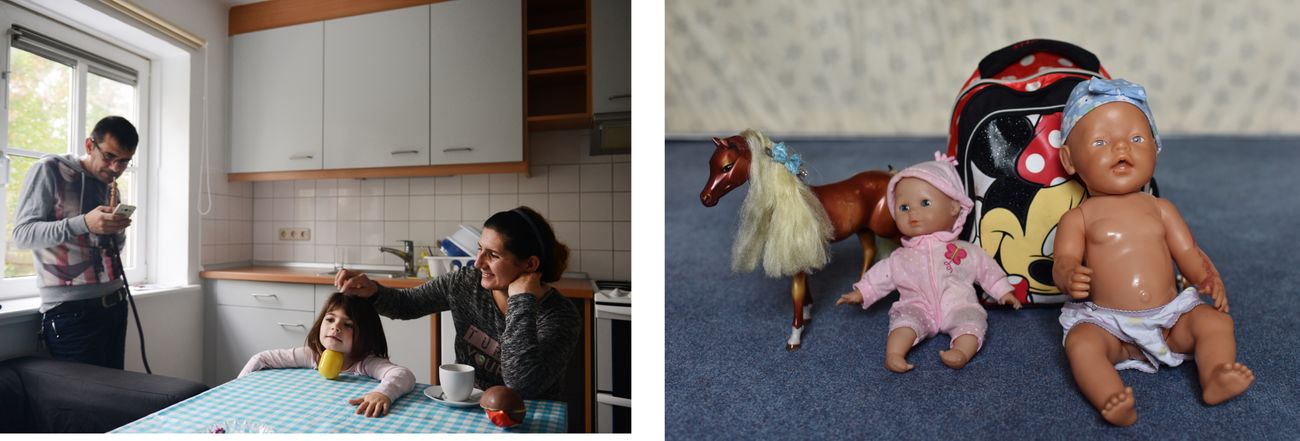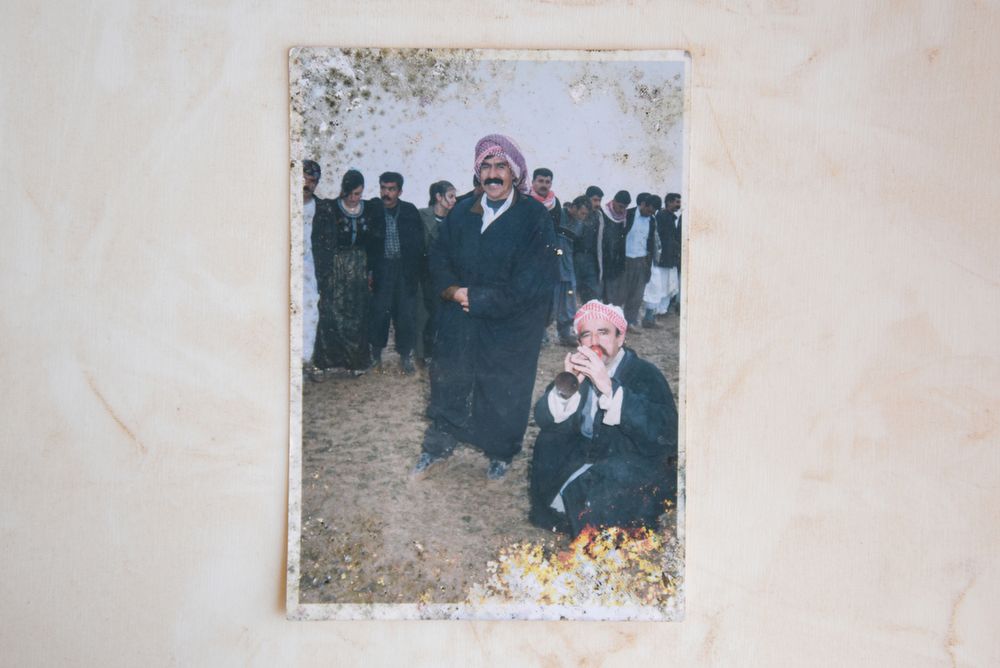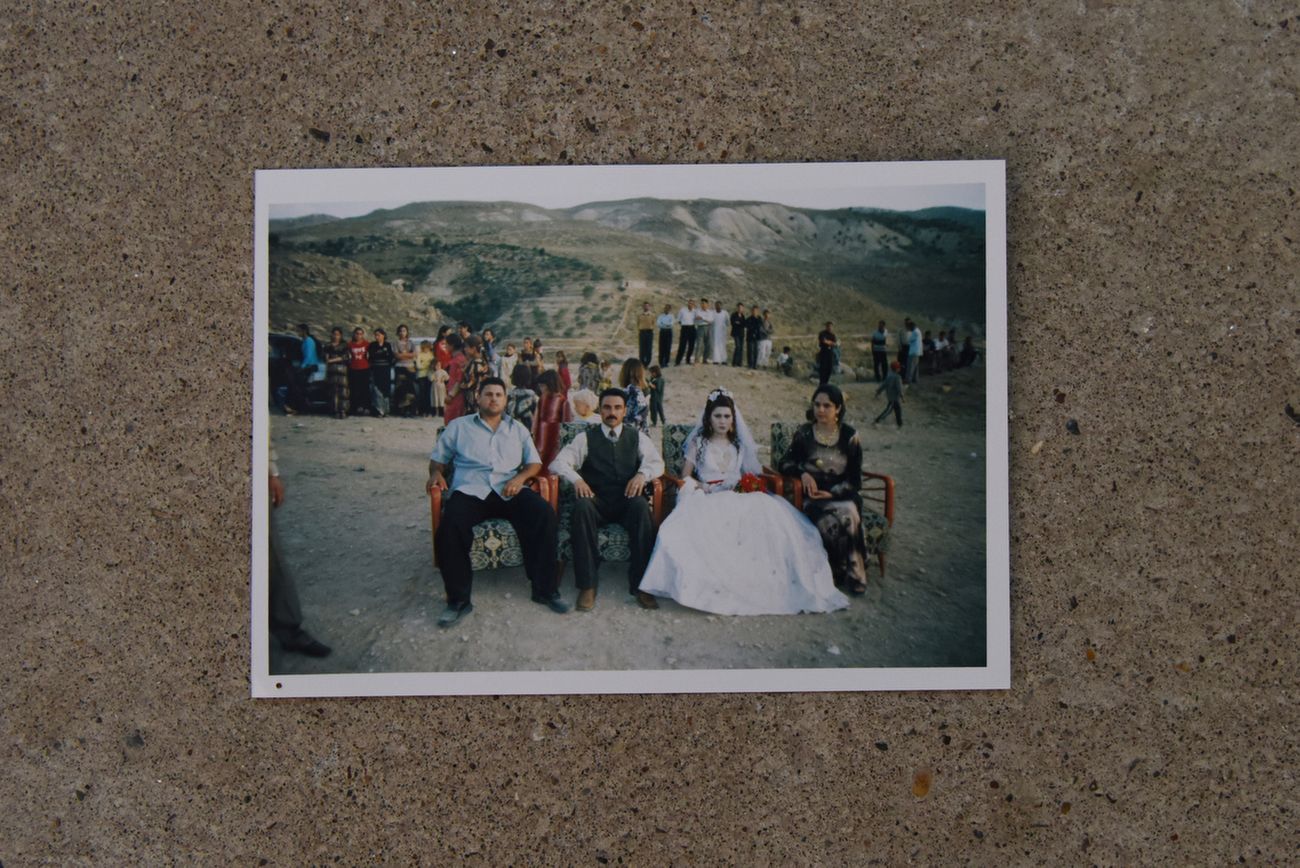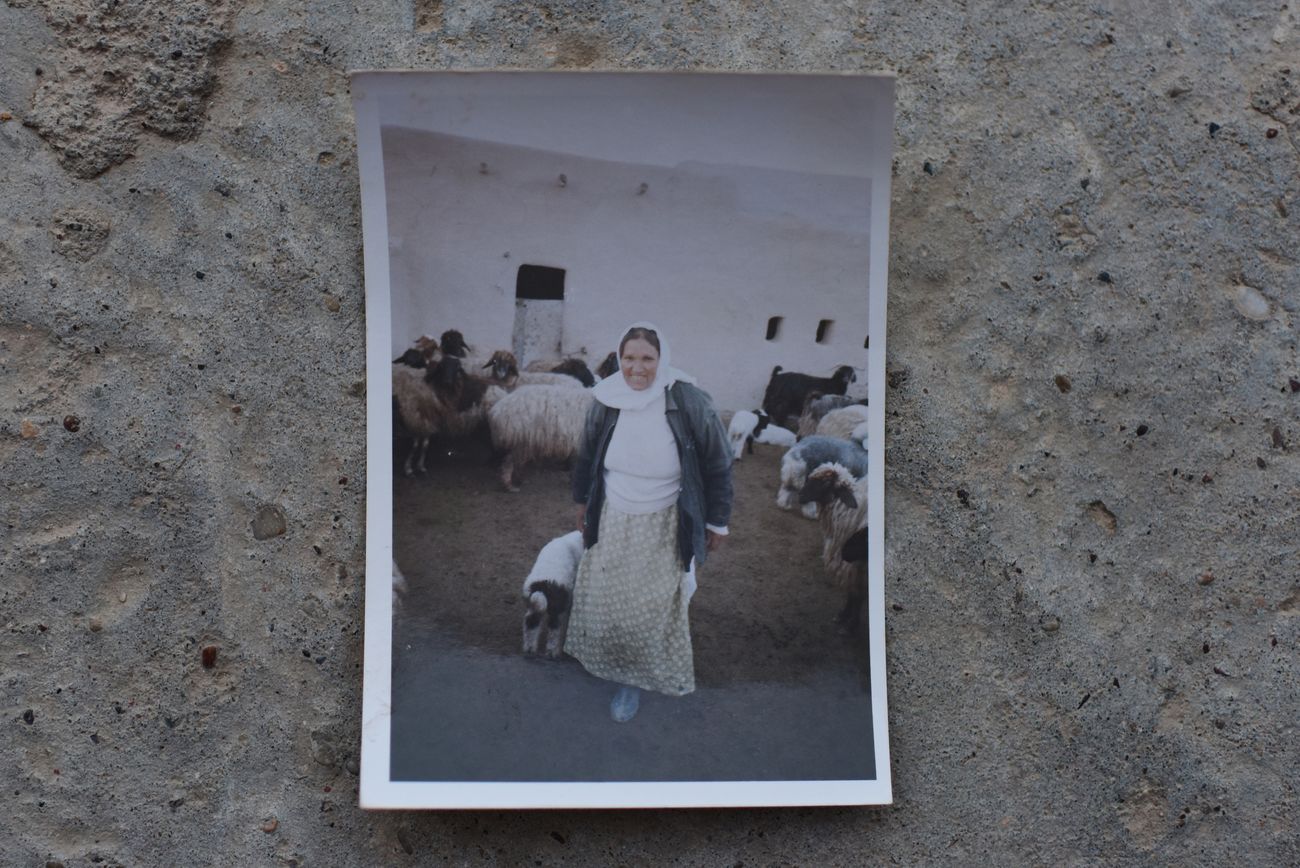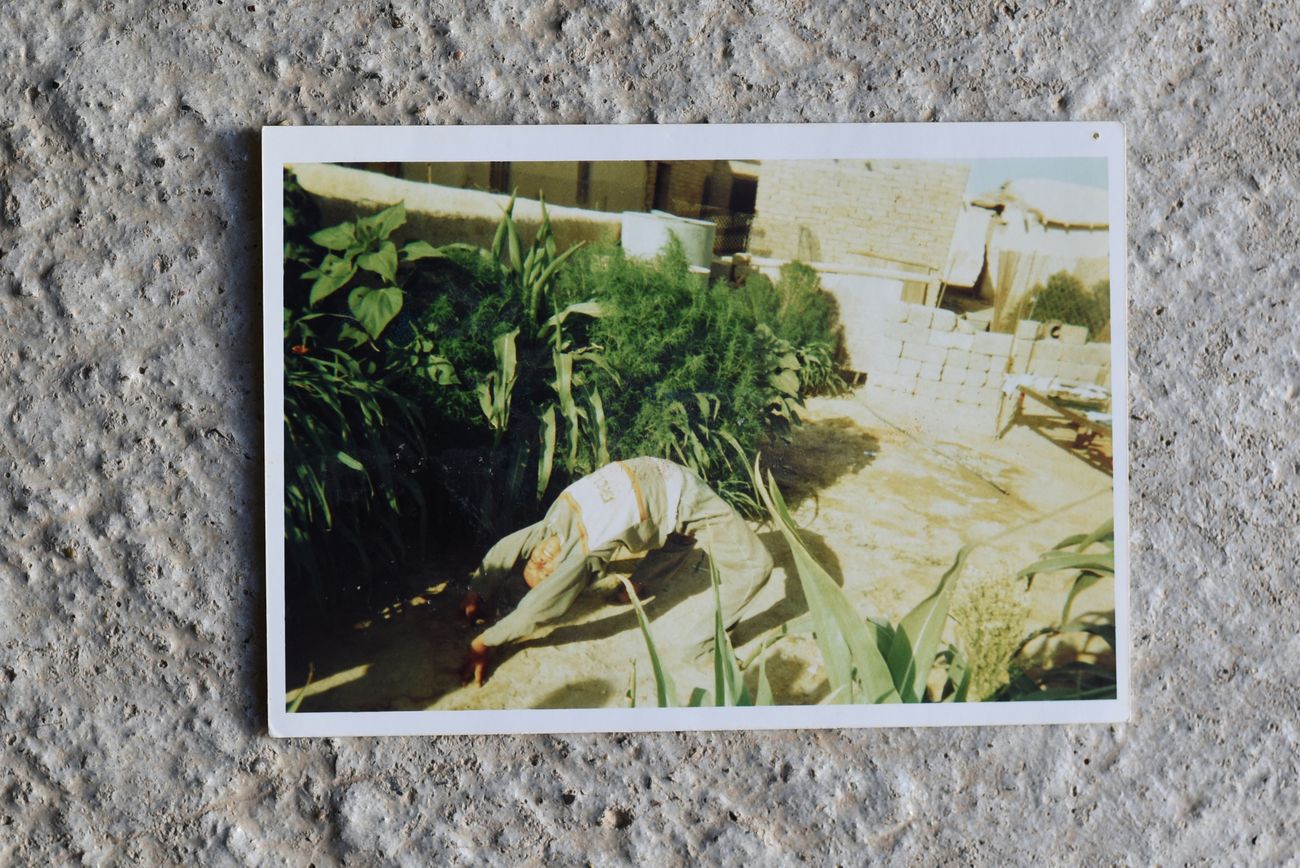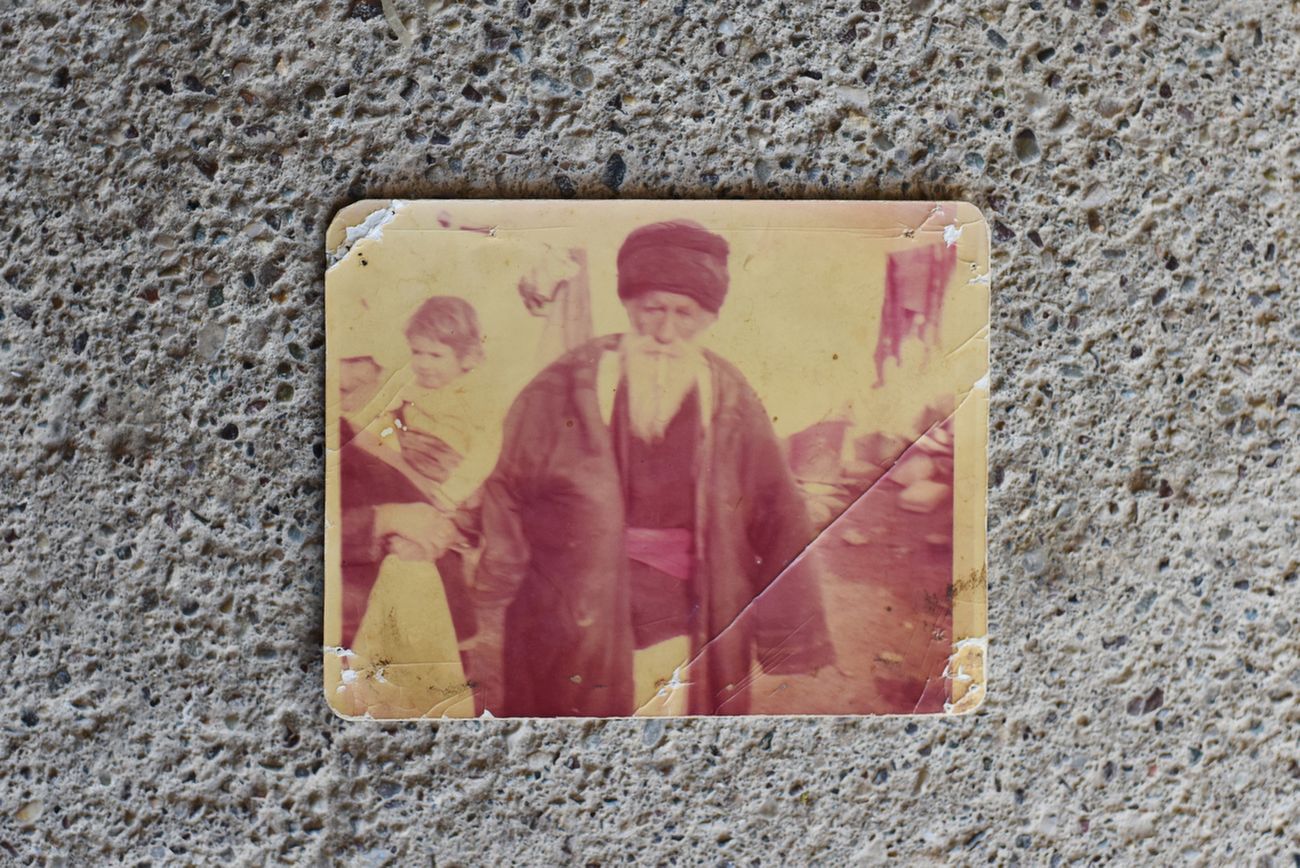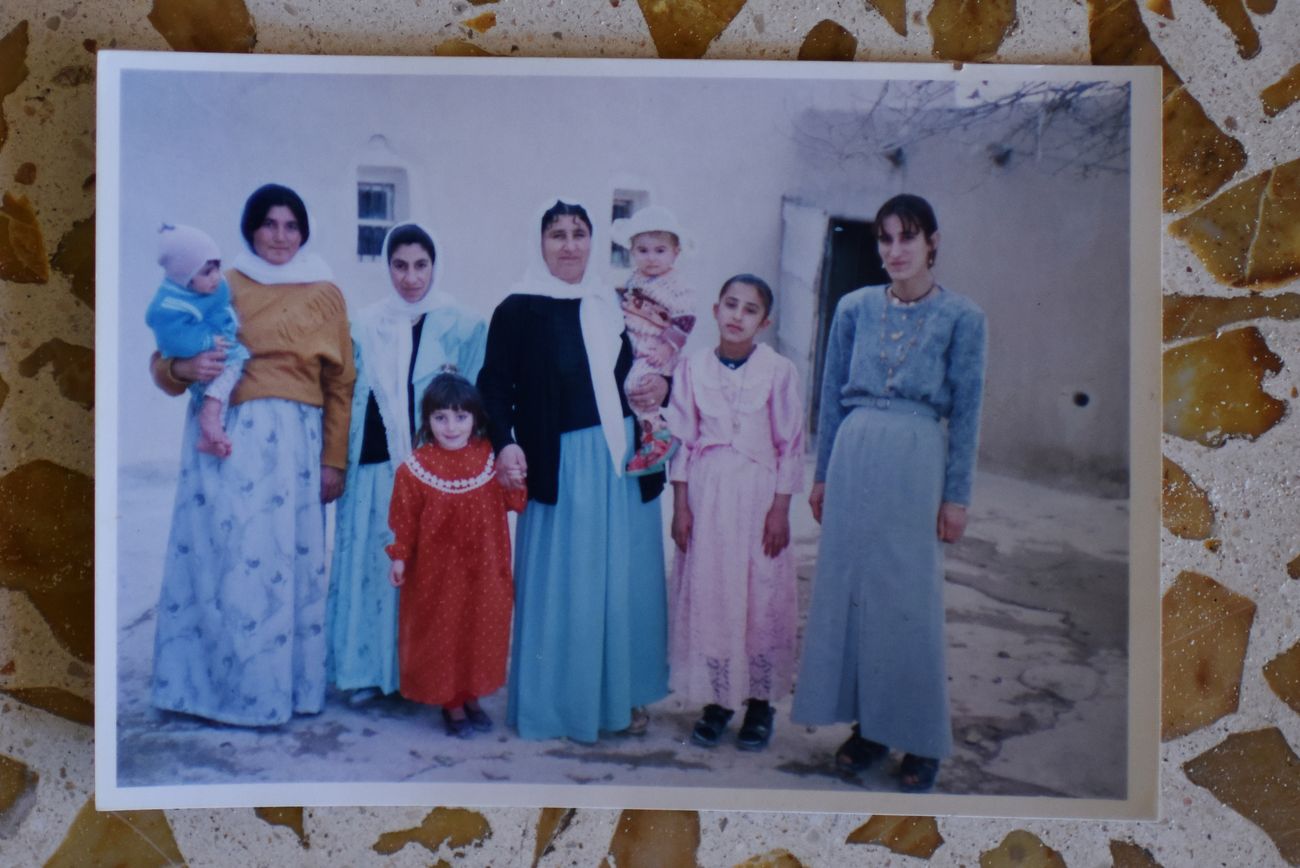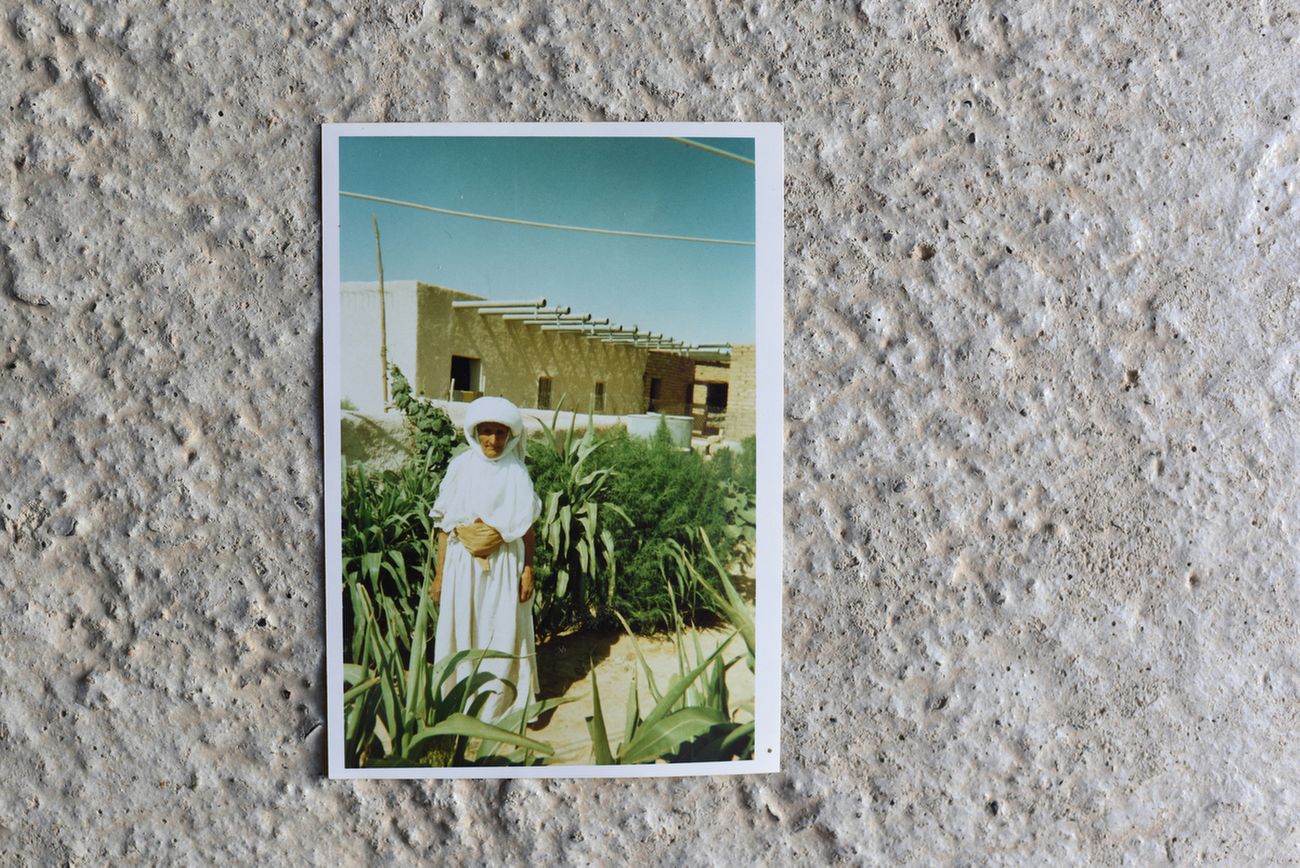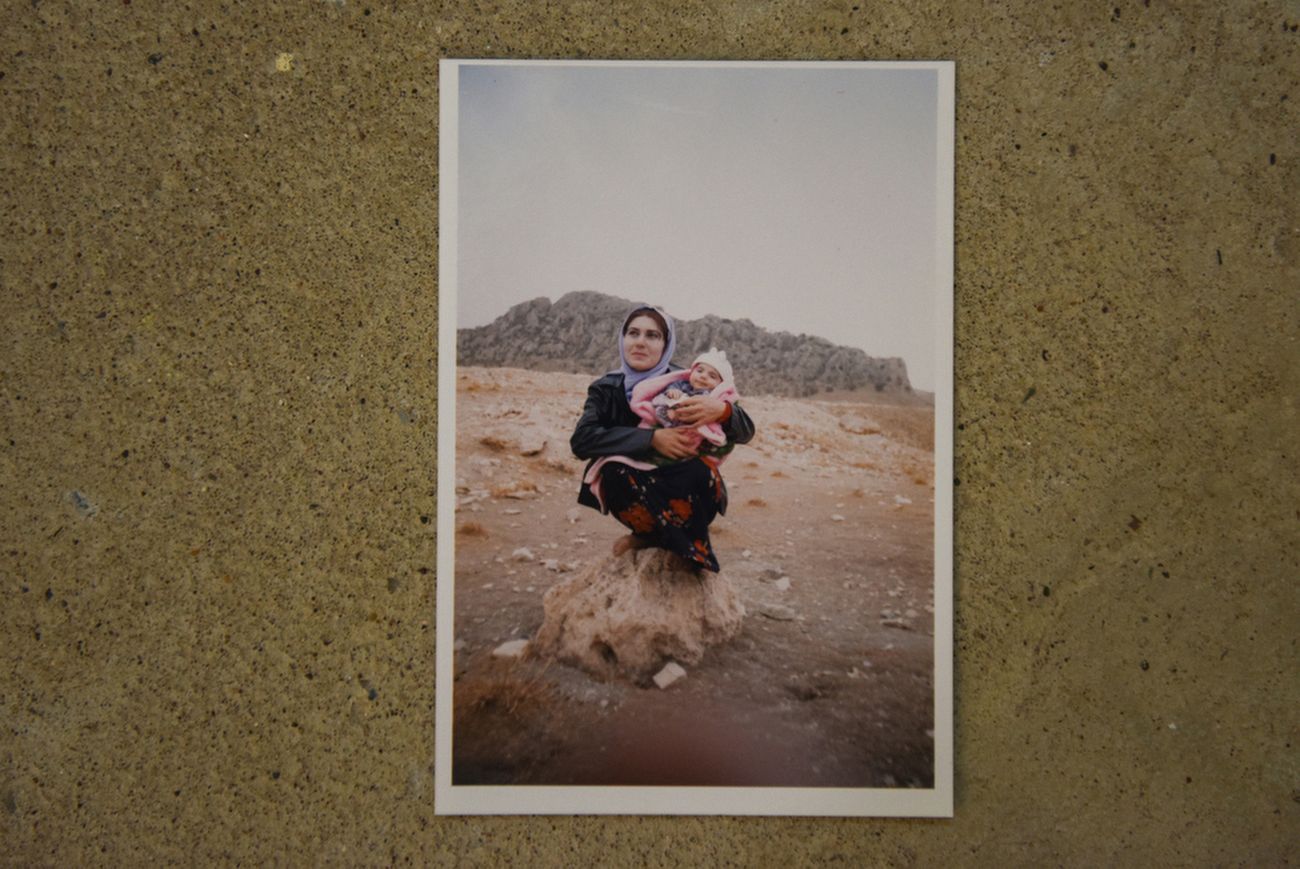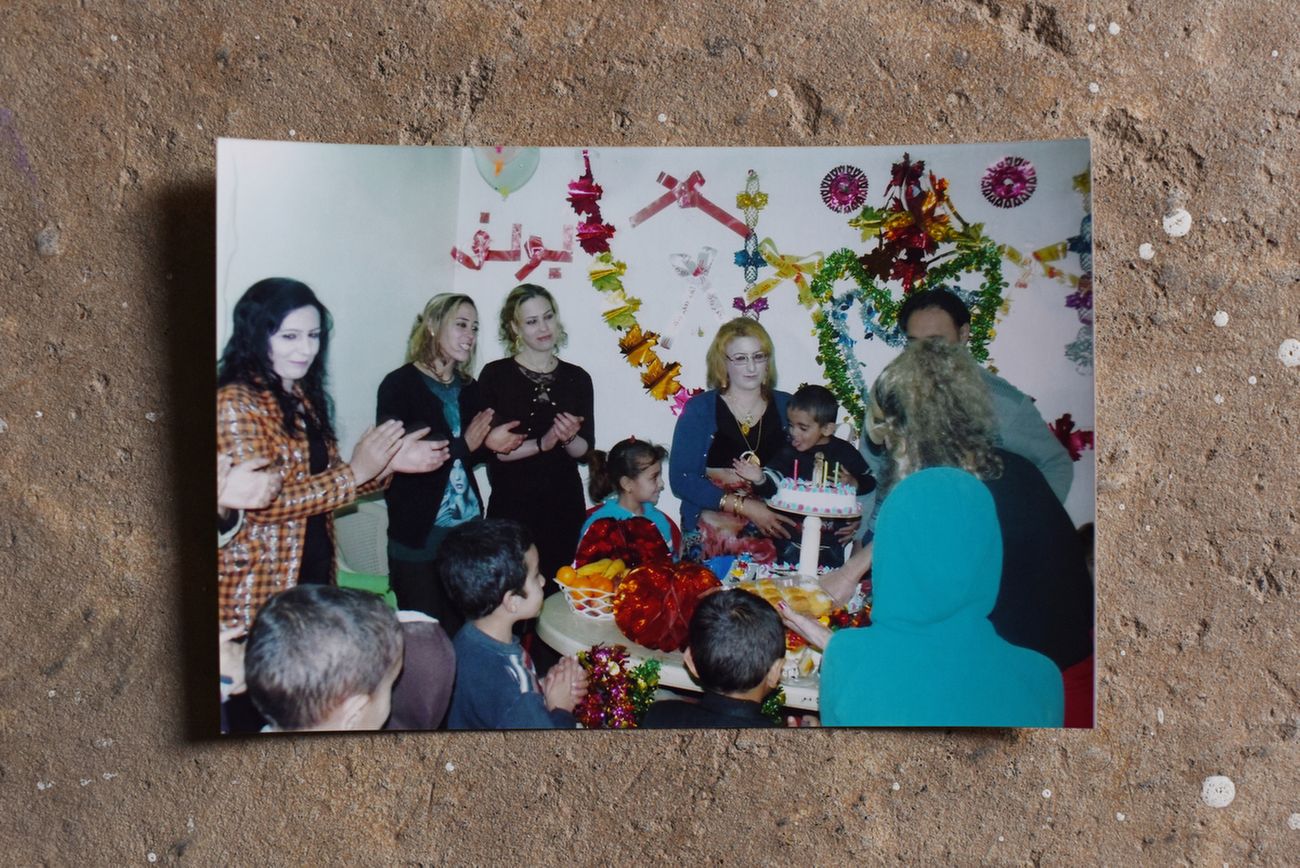Scattered Memories
-
Dohuk & Sinjar Left: Adol, 43, a Yazidi woman from Dogre village in the Sinjar mountains is now living in a refugee camp in Dohuk. 'When ISIS attached my village, I ran away from my home. I am now making brooms in this camp.' Old bed frames in Dogre village in the Sinjar mountains where Adol, 43, lived until she fled the advance of ISIS in August 2014.
-
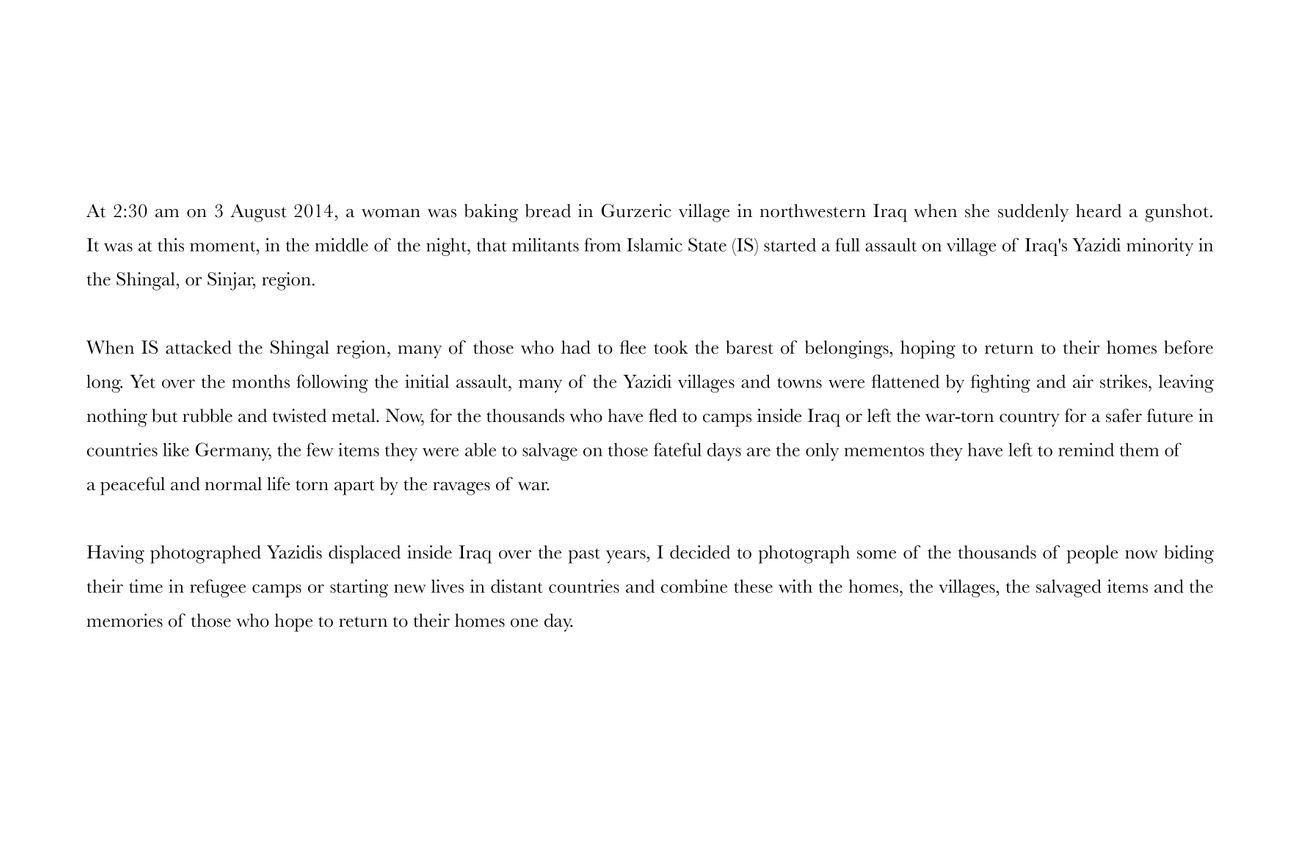
-
Iraq Dohuk, Iraqi Kurdistan Nazlin, 24, from Zoraba village in Sinjar, sitting in a house in the Sharia district near Dohuk where she fled with her family. 'When I was living in Sinjar, I often visited Yazidi temples in the Sinjar mountains, but most of these temples were destroyed by ISIS.'
-
Dohuk & Dogre village, Sinjar Left: A Yazidi couple, Ali 51, and his wife Shami, 40, living in a IDP camp in Dohuk. 'When I was living in Dogre village in Sinjar, I was a farmer and was growing eggplant, potatoes, tomatoes, okra etc. Now, I am living in this camp and have started growing flowers, celery etc in front of my tent.' Right: The street in Dogre village where Ali and his wife Shami lived before ISIS attacked in August 2014.
-
Left: A Yazidi family living in Sharia camp. Haydar, 40, the father said: 'I was working as a cleaner at clinic in Sinjar. I got married to my wife Kamal in November 2013. When ISIS attacked my village Zorav, in the northern part of Sinjar in August 2014, we ran away to Sinjar mountain. My wife gave a birth on the mountain on 6 August. Then we came to this refugee camp. Our home is made of mud and it was totally destroyed by ISIS. I don't want to go back to Sinjar even if Sinjar becomes peaceful in the future. I would like to go to Germany with my family. But we have no money to pay for smugglers.' Right: The mud built house where Haydar and his family used to live in Zorava. Now it is just a pile of rubble, destroyed by ISIS in August 2014.
-
Dohuk & Bolleck village Left: A young Yazidi couple, Rahad and Julia, in their home in the Sharia district near Dohuk. They fled Sinjar mountain when ISIS attacked their villages in August 2014. Both their families came to the Sharia district. Julia says: 'We met each other here in December 2015 when he came to my house to repair my family's car. We got married in May 2016. Since then I moved to this house where Rahad's family relocated to. Iraq is my country and I want to go back to Sinjar someday.' Right: A broken dressing table in the bedroom of Rahad's old house in Bolleck village in Sinjar. They fled in August 2013.
-
Left: A Yazidi couple, Ashor and his wife Barfi, from Khanasor. Ashor says 'I grew up in Sunnni near Khanasor. When I was a child, the area was a very small place. There were only a few cars in Sunni and every time my friends and I saw a car we started running to the car. Also, there was no ball to play with. So we made a ball with clothes and played with it with my friends. We had a farm and we were growing tomatoes, berries, onions, etc and we also had lots of sheep. I have a really peaceful memory of Sinjar. When ISIS attacked our village two years ago, I left my village with my wife and children. Since then we have been living in a house in Sharia district near Dohuk.' Right: An old farm in Khanasor where Ashow and his wife Bafi were living before they fled the ISIS advance in 2014. Later it was destroyed by US airstrike, targetting ISIS.
-
Left: George, born in 1997 in Khana Sor. He came to Germany on 13 August 2015. "I was born and raised in the village of Khana Sor. When I was a child I went to school while helping on my family's farm. Three of my brothers worked as interpreters for US troops stationed in Iraq. They sometimes brought me English books or movies from the base, and one of them compiled a handmade dictionary for me summarising useful English words so that already in my childhood I had the opportunity to learn English outside the school. When Islamic State (IS) attacked Shingal, I got into a car with the whole family and escaped from the village. After that, while living in the apartment of my elder brother who was going to university in Dohuk, I continued going to the high school in the city and occasionally visited my family who were living as evacuees in Sharia district. Right A pocket watch George received from his friend before heading for Europe. Putting it in a box and carrying it in his rucksack, he took it to Germany.
-
Left: Rasho, born in 1953 in Sukainiya village. He arrived in Germany on 20 June 2015. Right Rasho had a rosary when he left Iraq heading for Germany but he lost it in Greece , so his brother bought new one for him. I was born in 1953 in Sukainiya, a small village of about 100 households at the foot of the Shingal Mountains. I spent my childhood taking care of the sheep. I often went with my friends to the spring and drank that water. They were good old days. In 1975, due to Saddam Hussein's compulsory resettlement policy, I had to move from Sukainiya village to another village called Siba Sheikh Khidir located south of Sukainiya. I entered the Iraqi army the following year and served there for 14 years until 1990. In the meantime, I married and raised eight children. After retiring, I used to spend my days visiting relatives and friends in the neighborhood.
-
Left: Haki (left, born in 1990), Ghazal (right, born 1987) and their daughter Daniela (born 2012) from Khana Sor village in Iraq, in their home in Celle. They arrived in Germany on 21 December 2015. Right Daniel's favorite dolls. Daniel carry them into her rucksack all the way from Iraq to Germany. Ghazal says: "When Islamic State (IS) invaded Khana Sor village we escaped in my relatives' car. After that, I rented a small house in the city of Dohuk in the Kurdish Autonomous Region and lived as an evacuees together with a large number of relatives. My husband worked at an electrical shop. We left Iraq in mid November 2015. In Turkey we paid smugglers USD 2,100 each for my husband and I for the passage to Greece. Our daughter came with us free of charge. A boat carrying 75 refugees arrived in Rhodes in about six hours. When we got off the boat, we were given shelter by a humanitarian organisation that took us by bus and train to Germany.
-
Left: Anwar, born in 1997 in Khana Sor village. He arrived in Germany on 16 June 2016. Right: Yazidi's special lucky bracelet dazikbatouzumi brought from Iraq. It is said that wishes will come true when the thread breaks naturally. Anwar received it from his mother in 2015. "On 3 August 2014, I heard that Islamic State (IS) had begun attacking the villages of Shingal and I escaped from my hometown of Khana Sor in my relatives' car. I headed for Duhok in the Kurdish Autonomous Region. The road was overflowing with cars of Yazidi people escaping in the same way. After having fled, I rented a small private house near Khanke refugee camp in Duhok and began to lead a life of a refugee. I keep a wonderful memory with me of putting up a net across the street in Khana Sor to play volleyball with friends. In February 2016 I left Iraq for Germany.
-
Left: from left to right: Midea (b.2009), Mechel (b. 1983), Mina (b. 2012), Beewar (b. 2015) and Shaha (b. 1986) from Siba-Sheikh-Khedir village in Iraq, near their home in Osnabruck in Germany. They arrived in the country on 21 December 2015. Right: Handmade Bokjik, (the guardian of the house of Yazidis) a gift from a relative. He took it along from home when they were attacked by IS. It is now hanging on the wall of their house in Germany. Mechel says: "The night of the Islamic State (IS) attack I received a phone call from a friend living in the village of Gurzeric. He said, "IS has attacked." Early the next morning I took my family with me and headed to the Shingal (Sinjar) Mountains by car. Soon after the mountain was surrounded by IS and we, along with other refugees in the mountains, were isolated. There was virtually nothing to eat, and a few days later my 6 year old daughter died of hunger.
-
Fahad in the middle. Taken at the wedding party of an acquaintance in 2000.
-
Photograph of Hamo and Layla's wedding in Sinjar mountain in 2005. Hamo and Layla are Yazidis who fled the advance of ISIS in August 2014.
-
An old picture of Bafi smiling as she stands in front of her farm in Sinjar. The photo was taken before ISIS swept across the region in 2014 and Bafi and her family, who are Yazidis fled the advance.
-
A photograph of Ali's relatives playing in a garden in Dogre village. Ali's Yazidi family fled their homes in the face of the advance of ISIS in August 2013.
-
Hamo's father
-
A photograph of Julia (a Yazidi girl with a red dress) and her mother's friends taken when she was younger.
-
A old photograph of Ali's mother taken in 2005 in Dogre Village. They are a Yazidi family who fled their home in the face of the advance of ISIS in August 2013.
-
A photograph of Layla and her son Nassem in Sinjar mountains in 2006. Layla is a Yazidi whose family fled the advance of ISIS in August 2014.
-
Ashur and bafi's grand son's 3- year-old birthday party held at home in their village in Sinjjar. Some 30 neighbors attended (2 January 2013).
